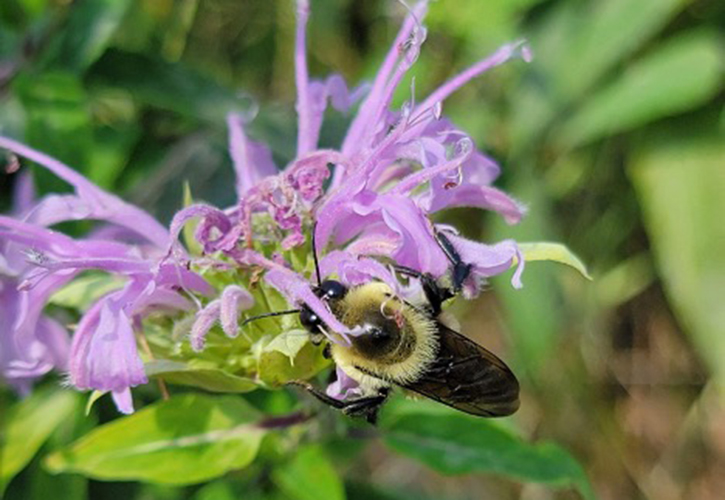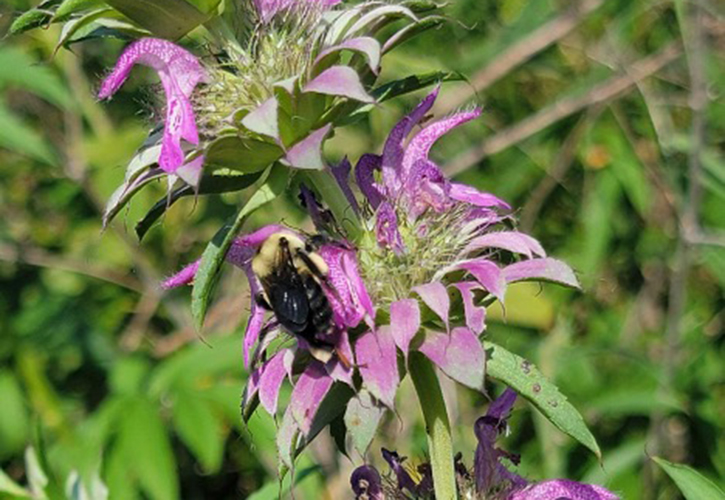Hanley Sustainability Institute
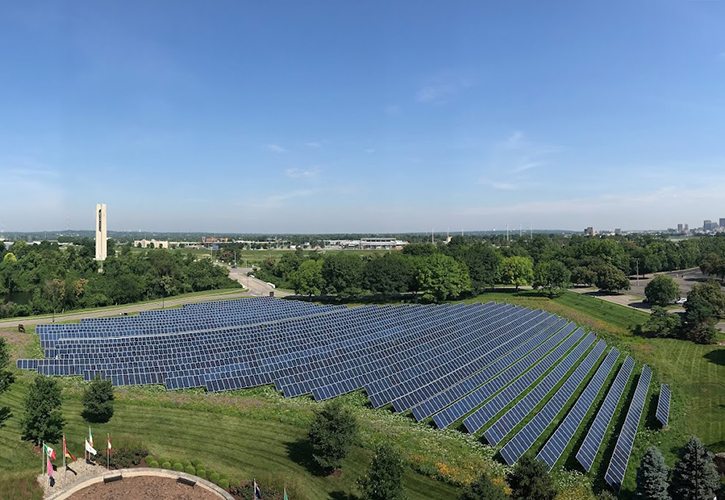
Solar prairies an important part of UD campus
By Olivia Pressel and Alexander Owens
The solar prairie is an integral part of the University of Dayton and its sustainability goals.
The solar prairie is situated next to Curran Place and includes 36 rows of solar panels across six acres of native prairie plants. In addition to this large prairie space, there are a few other small plots of native ecosystems on campus including a wetland next to the Art Center, grasslands on Stuart Hill, behind the Science Center, and the Merkle on Chambers St. These areas include native plant species that support wildlife including important pollinator species.
Generally, prairies allow for less soil erosion, flood mitigation and filtering runoff. These aspects of the prairie at Curran Place make it important green infrastructure that lessen the need for gray infrastructure. Gray infrastructure is traditional stormwater drainage like piping, gutters, drains and more. This type of drainage can disrupt natural processes and can leave pollutants in runoff that could lead to streams, rivers and lakes. Having the prairie as green infrastructure utilizes water for native species and can prevent unsafe runoff and flooding that gray infrastructure causes.
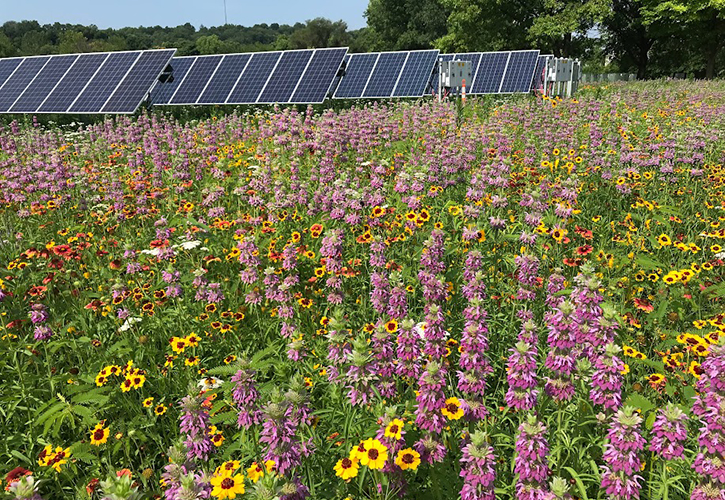
One important aspect of the solar prairie at Curran Place is its designation as a Bee Campus area. UD gained Bee Campus status in 2022 for its efforts in establishing pollinator habitats throughout campus. These designated areas, especially the solar prairie, provide important habitats for pollinators, allowing for nesting, food and protection. These pollinators are essential for ecosystem health, and contribute to dispersion of native plants and production of local crops.
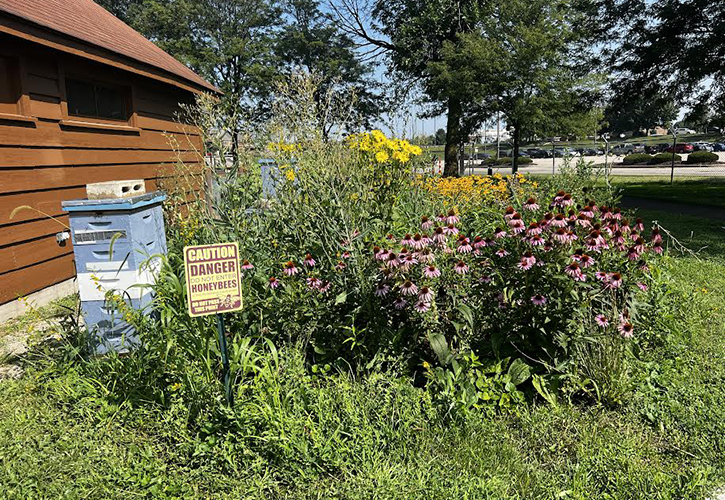
The solar prairie is managed by a team of student employees within the Facilities Management department. The team is always open to volunteers or help if students are interested in getting involved.
These students are responsible for removal of invasive plants as well as continued care for native species. The team is also involved in Bee Campus and other ecological outreach and education events such as an Instagram for UD’s Bee Campus. Student involvement in the prairie is an essential part of UD’s continued mission to integrate ecological stewardship.

